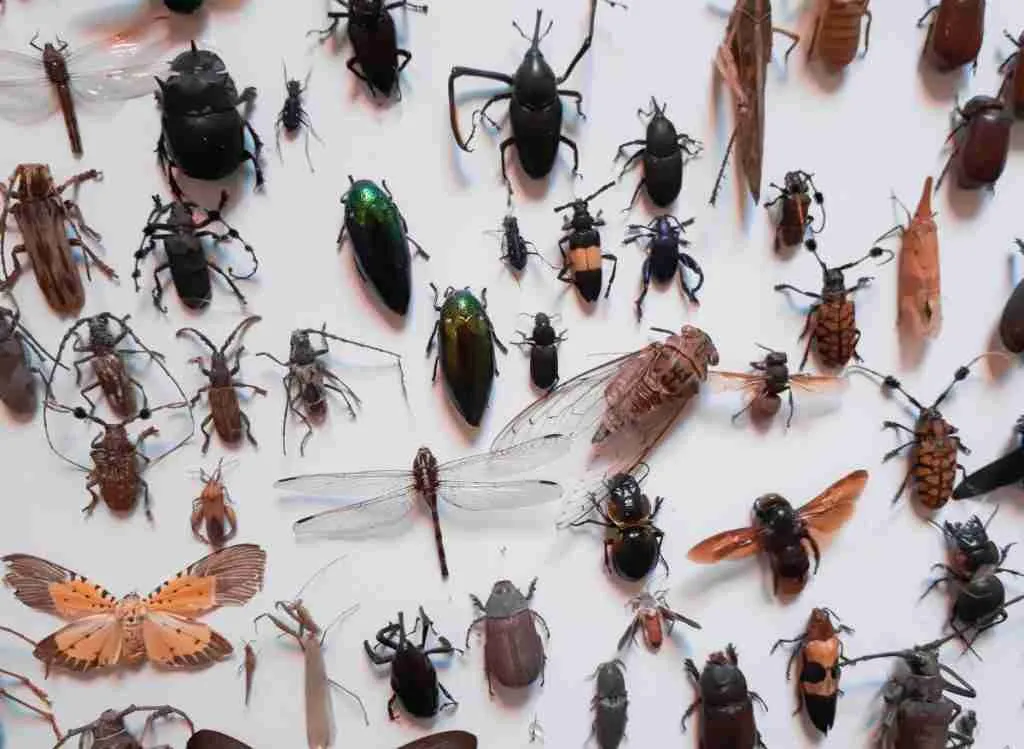
Bugs that are good for the garden are often called “beneficial insects.” They benefit your garden by eating up the pest insects that could destroy your plants. So, what are the best beneficial insects for gardens?
Generally, beneficial insects fall into the following three main categories:
- Pollinators: These are the ones that pollinate your garden’s followers. This category of beneficial insects typically includes butterflies, bees, moths, and flies.
- Predators: These are the ones that eliminate the pests by eating them up. These mainly include praying mantises, ladybugs, and green lacewing larvae.
- Parasitizers: They also prey on the other insects as the predators do, but their way is slightly different than the predators. Parasitizers lay their eggs in or on the bad bugs. When these eggs hatch, their larvae feed on the host insects. The primary member of this category is the parasitic wasps.
Read on to find everything you need to know about the best beneficial insects for gardens, how to attract good bugs to your garden, and more.
See also: How To Effectively Use Nematodes To Control Garden Pests!
What Are The Best Beneficial Insects For Gardens?
Beneficial insects are essential for your garden, particularly for the health and productivity of vegetable and ornamental gardens.
Following are the beneficial insects that are best for the garden, and you might even find them in your backyard.
1- Ladybugs
Ladybugs (AKA lady beetles) are gardeners’ favorite insects because they eat aphids, whiteflies, mealybugs, and other small insect pests.
They are also fierce predators despite their amusing names and appearance. Ladybugs start their life as larvae, cruise around on plants, feast on aphids, and finally turn their color into bright red. It is interesting to know that a ladybug larva can eat up to 40 aphids in just an hour.
The larval lady beetles look like tiny alligators, and similar to the adult lady beetles, they are also voracious predators of the same insect pests.
See also: Can You Really Compost Pasta? Here’s The Truth!

2- Green Lacewings
Green lacewings are one of the most important and among the best beneficial insects for gardens. And, similar to ladybugs, lacewings larvae are so voracious and prey on aphids.
Their larvae prey upon soft-bodied garden pests that include aphids and caterpillars. On the other hand, the adult green lacewings feed on nectar and pollen.
Their larvae look as if they were a mixture between a slug and an alligator. Larval lacewings prey on various garden pests, including aphids, mealybugs, mites, and scales.
Adult green lacewings are nighttime insects, with some species feeding essentially on nectar and pollen while others are predators of insects.
See also: What Are The Most Effective Herbicides For Blackberry Control?
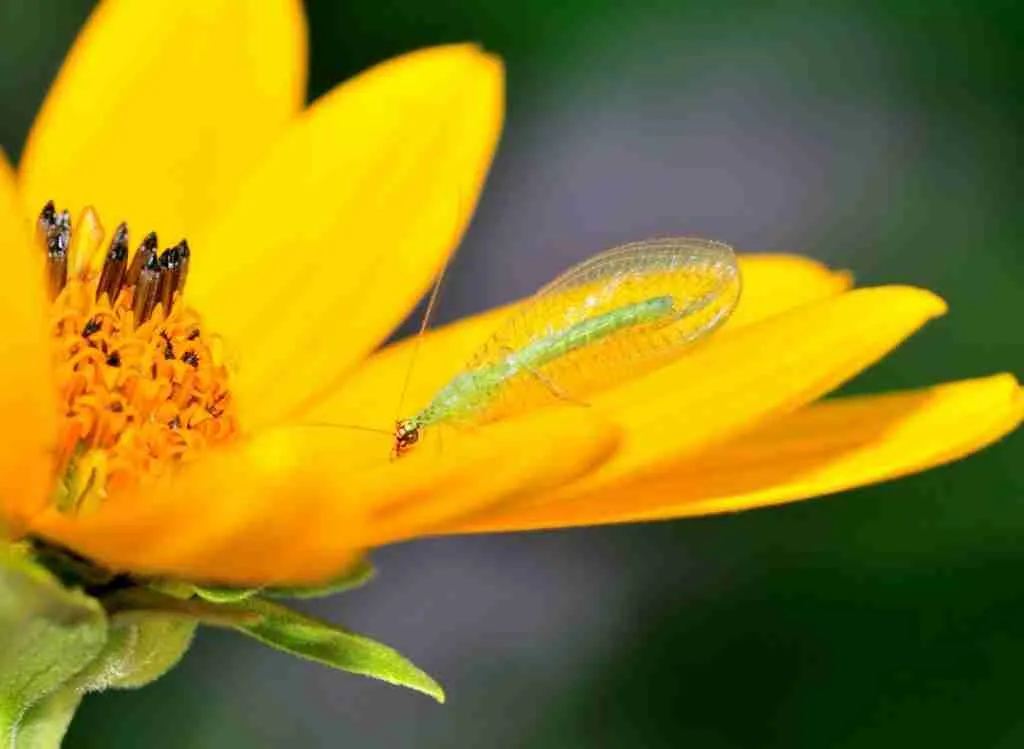
3- Praying Mantises
Praying Mantises are also ferocious predators. They hunt such insects that are dangerous for your gardens like grasshoppers, beetles, moths, and flies.
It is important to know that praying Mantises can be trouble for your garden despite being beneficial insects. They can be ruthless enough to eat up other beneficial insects, including bees, hummingbirds, butterflies, and even each other.
See also: Scotts Grubex Vs. Bayer Grub Control: Which Should Really You Choose?
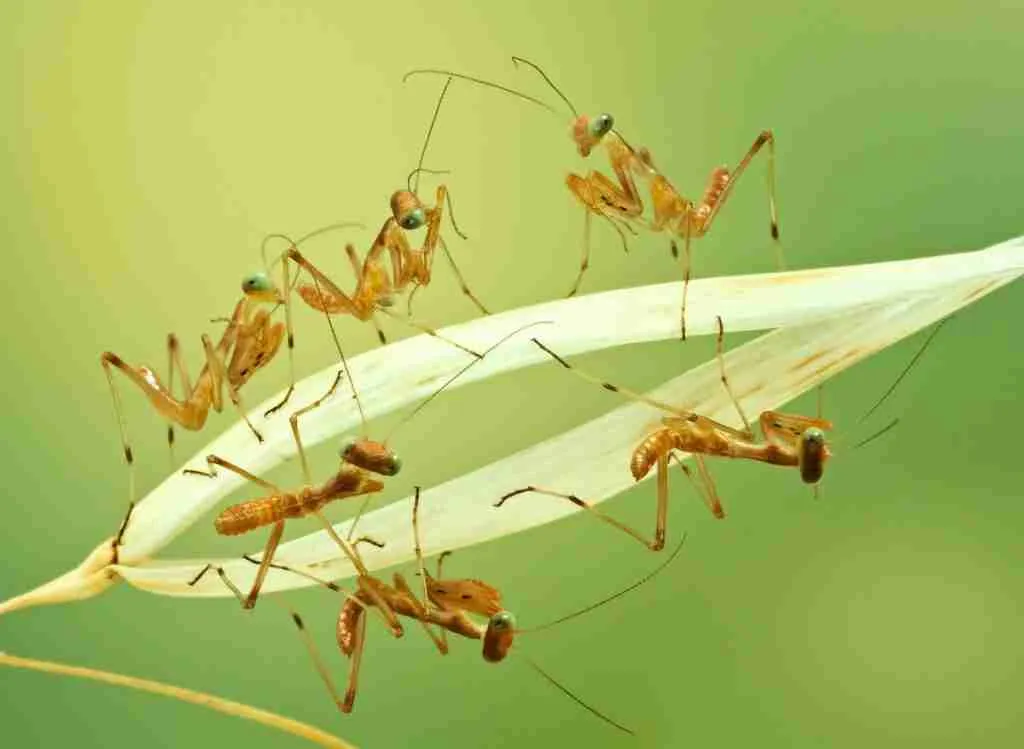
4- Spiders
Spiders are very effective in controlling pests. It is no surprise that people often overlook them as the most beneficial insects for gardens.
Spiders mainly eat live insects as the movement of their prey attracts them to it. Wolf spiders and jumping spiders keep pests under control more effectively.
See also: Here’s How How You Can Make Bug A Salt More Powerful
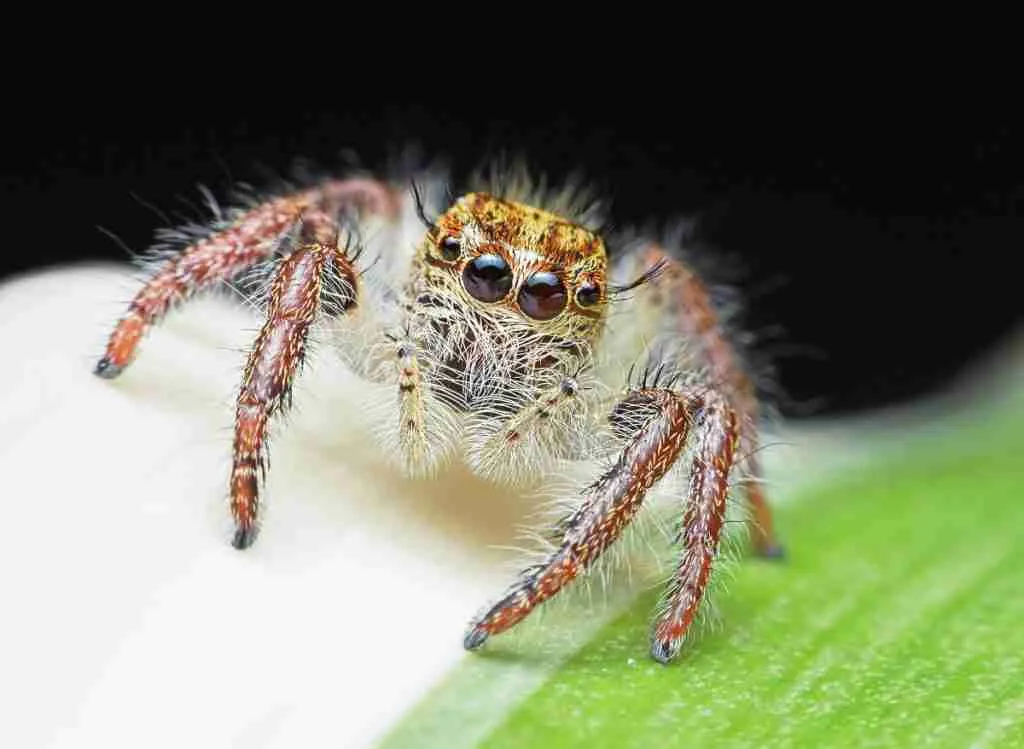
5- Ground Beetles
These insects are beneficial in both larvae and adult forms. They can eat various insects, including caterpillars, weevils, nematodes, silverfish, thrips, and slugs.
Ground beetles are a family of mainly nighttime predators feeding on many insects and slugs in the garden during nighttime.
During the day, they stay hidden in nearby vegetation, underneath rocks, or in soil crevices. By preying on insect pests at or below the soil surface, their larvae are also beneficial.
Some species of ground beetles may live for about two to three years and require remote overwintering sites, including perennial plants or clumps of grasses.
See also: Bug A Salt Vs. Bug Blaster: Which Is Superior?

6- Soldier Beetles
The beetles form various and diverse insect groups. Some species feed on plants, while others are predators of insects, worms, and slugs.
Adult soldier beetles are part of the families of beetles that pollinate flowers while also feeding on pollen and nectar.
Larval soldier beetles are night-loving insects and develop under moisture, which shelter objects where they feed on insects and slugs or plant materials.
However, some beetles, including adult Japanese beetles, can be very destructive pests in your garden. If you have a small garden, you can remove them by hand.
See also: 10 Miracle-Gro Best Alternatives To Check Out!
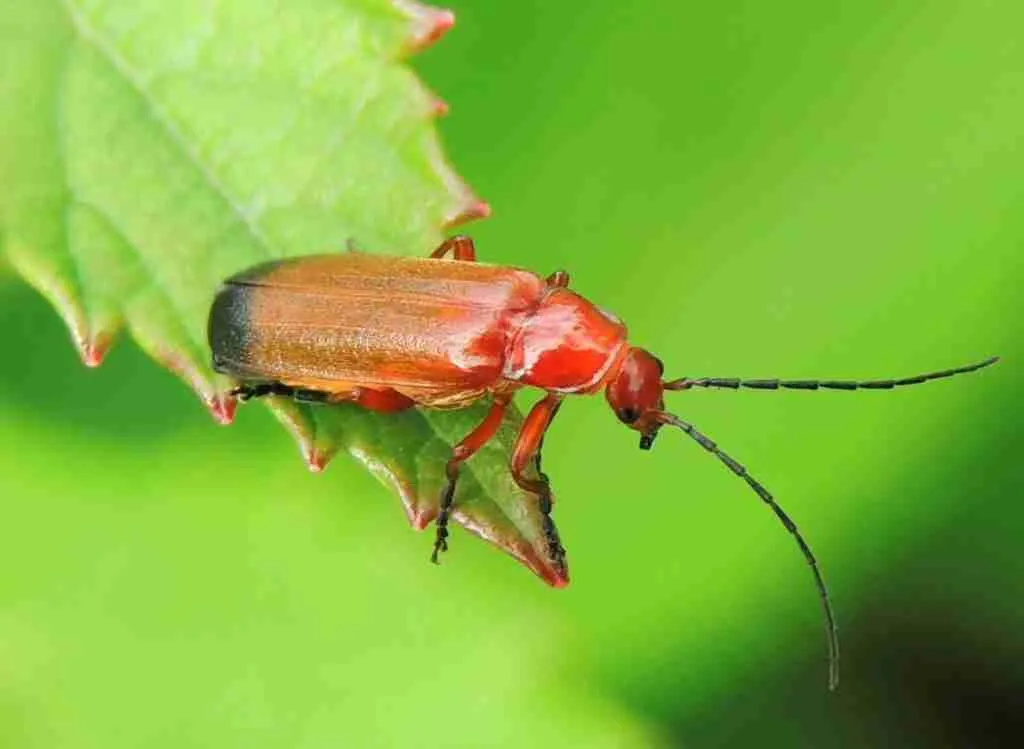
7- Assassin Bugs
Assassin bugs are true to their name because both nymphs and adults have long, sharp beak-like mouths with which they usually impale their prey. And then, they inject enzymes into the insect victim through this beak, liquefying its body contents and sucking back up through the beak.
These best beneficial insects for the garden strangely look like a mixture between a squash bug and a praying mantis. You can even mistake their adult forms for squash bugs. They prey upon many insects in the garden using their sharp mouthparts.
The most familiar and largest assassin bug is called the wheel bug because of the cogwheel-shaped structure on the upper back of the adult insects’ bodies. Do not try to handle this fierce predator because it can give a painful bite to a human.
Assassin bugs are the best beneficial insects for gardens. Mainly, they prey on garden pests, including aphids, caterpillars, Japanese beetles, and leafhoppers.
See also: The Best Insecticide for Japanese Beetles
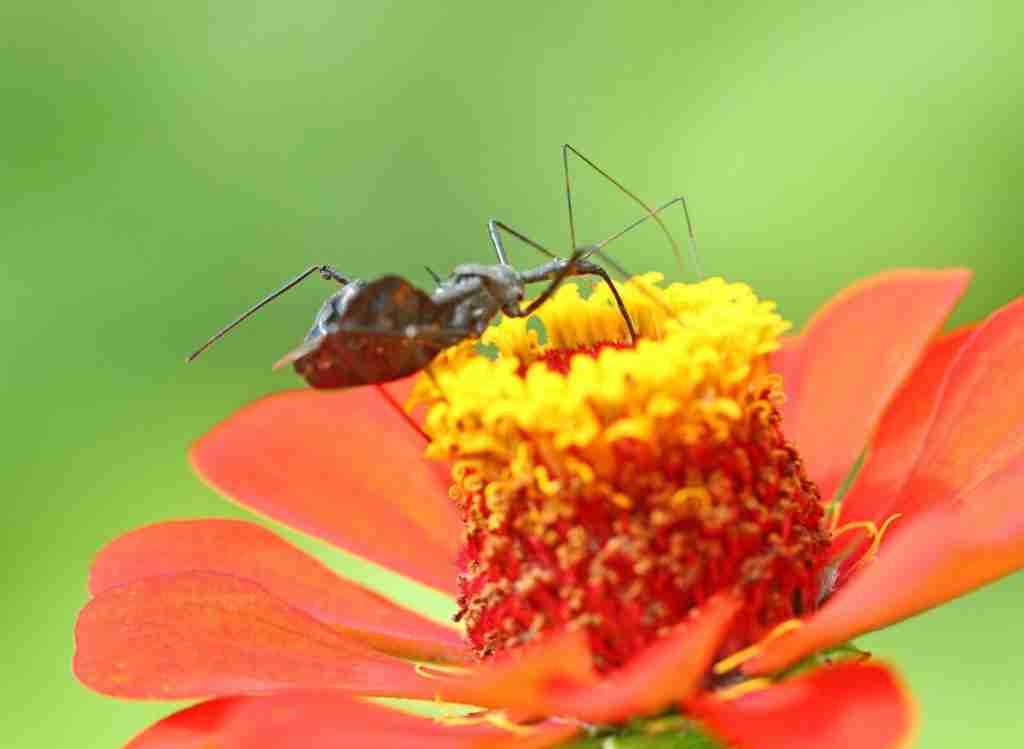
8- Robber Flies
In general, flies pollinate plants while also feeding on nectar and pollen. Some adult flies, such as robber flies, catch other insects in flight, and many fly larvae feed on garden pests.
Horseflies, deer flies, and house flies have bad reputations because of their painful bites. The extra-long legs of robbers fly to make them bug-eating machines. They might scare you, but they don’t attack humans as the horseflies do. They prey upon many common garden pests.
Insect members of the Tachinid fly family are powerful parasitoids. Typically, the adult flies feed on nectar while the females deposit eggs or larvae on or inside their target insect host.
Common target insects of the Tachinid fly family include Colorado potato beetle larvae, grasshoppers, gypsy moth caterpillars, squash bugs, Japanese beetles, and stink bugs.
See also: 5 Hibiscus Plant Diseases You Need To Look Out For!
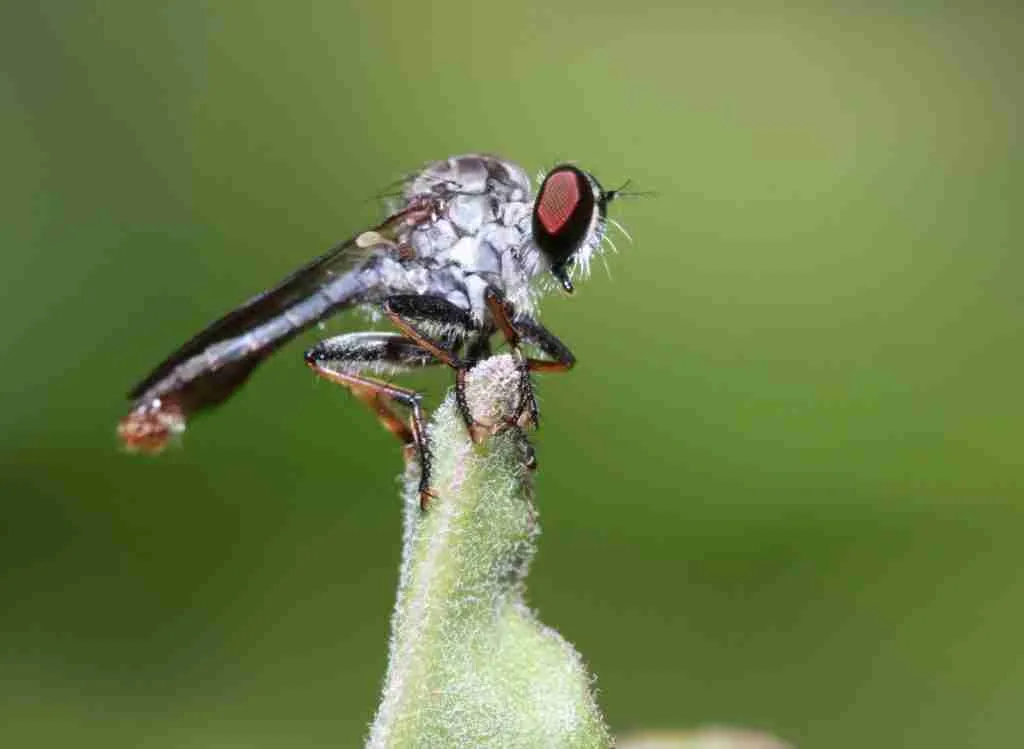
9- Hoverflies
Hoverflies also come in the list of the best beneficial insects for the garden. A hoverfly appears like a tiny yellow jacket without a stinger. The hoverflies are very important pollinators and feed on nectar and pollen.
Their larvae are insatiable predators and kill their victims by sucking the juice out of them. Their primary victims are caterpillars, aphids, thrips, and beetles.
Flies in the Syrphid family, also known as hover or flower flies, are typically frequent garden visitors relying mainly on pollen and nectar for food. Additionally, the larvae of many Syrphid fly species are important predators of aphids.
See also: 5 Spider Plant Diseases You Need To Look Out For!
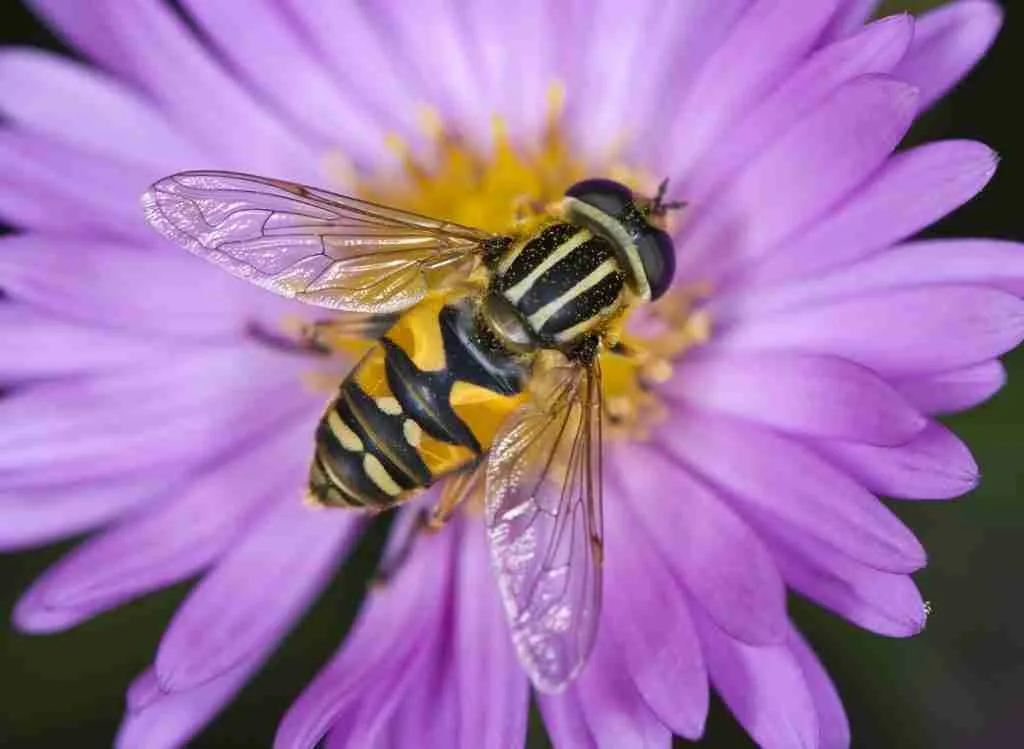
10- Parasitic Wasps
They are so tiny that you most probably can’t see them while they are at work. But that doesn’t decrease their efficacy. Parasitic wasps lay their eggs on or in other insects.
After the hatching of their eggs, their larvae eat their hosts alive before they turn into adults. From brassica-munching caterpillars to sawflies, aphids, and ants, they kill many garden pests.
Wasps pollinate plants while also feeding on nectar. And usually, they prey on many insects and spiders, serving as food for the wasp larvae.
The most common wasps are social wasps, which include paper wasps, yellow jackets, and hornets.
Female wasps paralyze a spider or insect with venom in some species and then place the still-living prey in their nest. Then, the female wasp lays her eggs on the immobilized prey, serving as food for the wasp larvae after the eggs hatch. Most wasps have their preferred prey, including beetle larvae, stink bugs, cicadas, or spiders.
See also: Can You Really Compost Rice? (Yes! And here’s how)
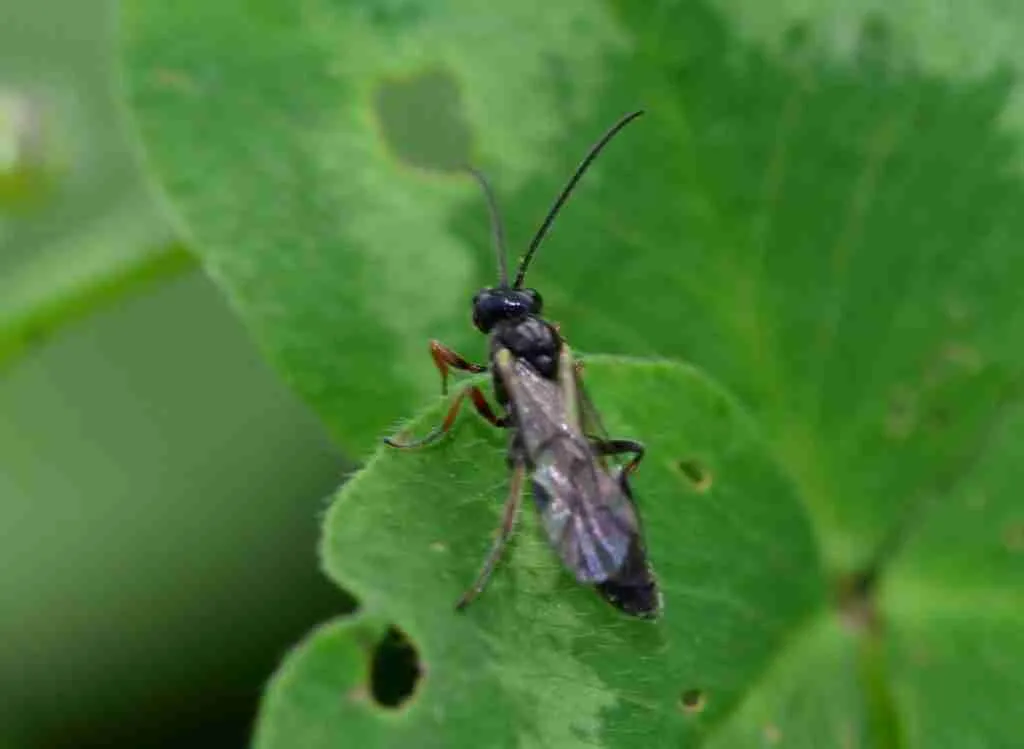
How To Attract Good Bugs To Your Garden?
You can attract these beneficial pests to your garden by planting their favorite native pollinator plants. These plants attract beneficial insects by producing pollen and nectar.
Remember that using insecticides to kill insect pests will also kill beneficial insects that provide free and natural pest control.
If you fulfill the beneficial insects’ basic needs for food, water, and shelter, you can attract these good guys to your garden. If your garden contains a diversity of plants, a wide range of insects will be attracted to it. Most beneficial insects appear in the garden even before the pests do, and they will stick to your garden if it has alternative food sources, like pollen and nectar, for them.
Keep in mind the following points to attract the best beneficial insects for the garden.
- In the spring, the early blooming plants help draw many beneficial insects to your garden. These plants include biennials such as carrots or parsley and plants with tiny blossoms like alyssum.
- After the spring, the beneficial insects get mostly attracted to plants with compound blossoms, such as goldenrod, yarrow, Queen Anne’s lace, and flowering herbs like mint, lavender, dill, sage, lemon balm, and fennel.
And keep in mind that plants treated with systemic insecticides can produce toxic pollen and nectar, harming pollinating insects. So when purchasing seeds and plants at your local nursery, ensure whether they are organic or pesticide-free stock.
See also: How To Effectively Get Rid Of Cutworms (Including simple yet handy hacks!)
What Are The Best Plants To Attract Bugs?
You may want to know in detail which plants are best at attracting bugs or beneficial insects. So, here’s a list of flowers that mostly attract beneficial insects and are a must-have in the garden.
- Yarrow: It is a perennial flower and attracts a variety of predatory bugs, including butterflies. The red, yellow, and white shades of these flowers make your garden look beautiful as well.
- Marigold: It is a petite annual and an orange-and-yellow flowering species. These are mixed with vegetable beds to add color and control pests.
- Sweet alyssum: These honey-scented flowers are mostly planted by gardeners to cover the ground around taller vegetables like chard and kale.
- Coneflower: These flowers attract butterflies. Moreover, their elegant purple blossoms attract beneficial insects.
- Goldenrod: They mainly bloom in spring and summer and attract many beneficial insects. Their yellow blossoms add to the beauty of your garden.
See also: Here’s How You Can Save A Lot of Money With Gardening
Wrapping Up
Learning about the best beneficial insects for gardens is generally the best defense when fighting harmful bugs. If you use chemical pesticides to fight and control insects, you will most likely kill beneficial and harmful bugs at the same time.
And even the pesticides known as natural can hurt beneficial insects and plants; therefore, they should not be used.
Instead, combine a variety of valuable plants and welcome the good bugs; let beneficial insects do all of the pest management work.


